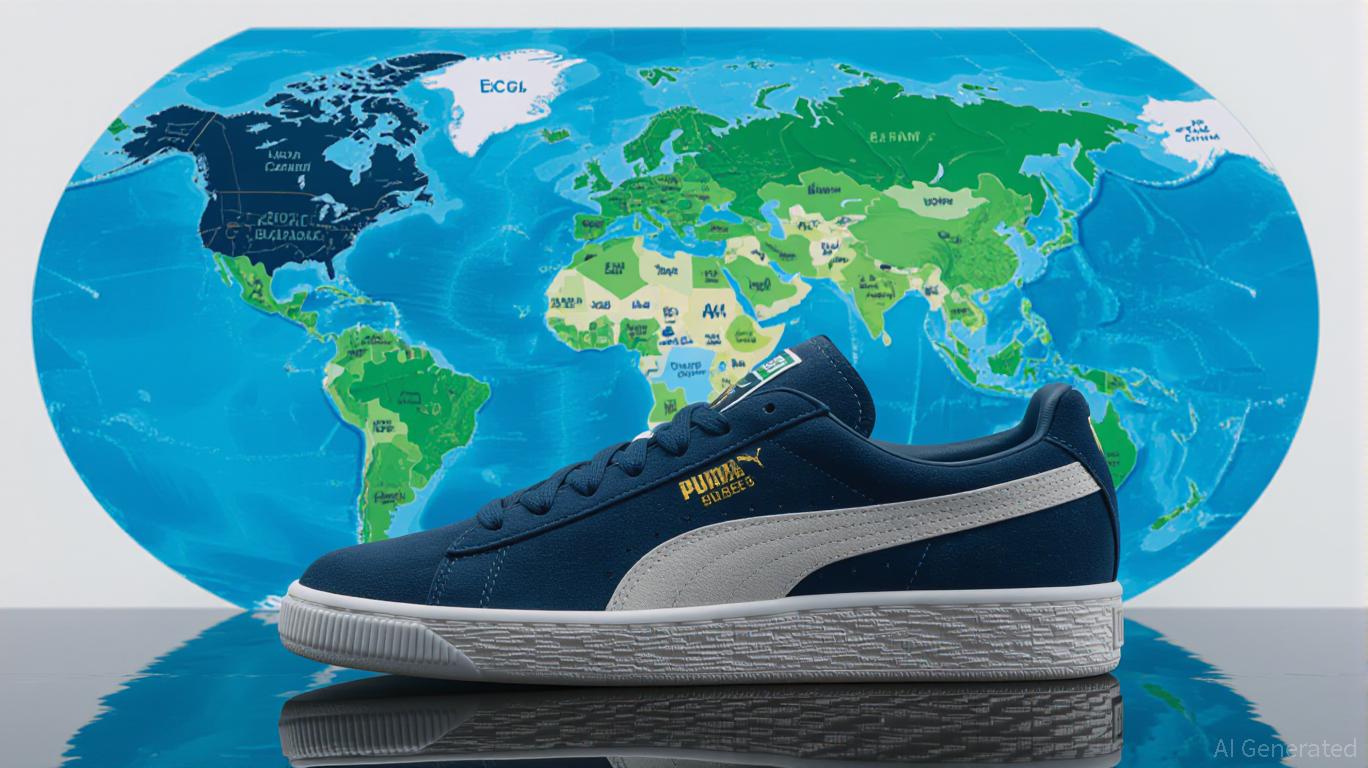
The recent earnings warning from Puma has sent shockwaves through the European sportswear sector, exposing vulnerabilities in a market already strained by U.S. tariffs, foreign exchange (FX) headwinds, and shifting consumer demand. With Q2 sales declining 8.3% on a reported basis and a net loss of €247 million, Puma’s struggles reflect broader systemic pressures facing European brands. Yet, the question remains: Can these companies adapt their strategies to sustain long-term resilience in an increasingly fragmented global economy?
The Perfect Storm: Tariffs, FX, and Inventory Gluts
Puma’s woes are emblematic of a sector grappling with a confluence of challenges. U.S. tariffs—now averaging 22.5%—have eroded gross margins, with the U.S. market alone projected to cost Puma €80 million in 2025. Compounding this are FX headwinds, as the euro’s volatility against the dollar and yuan amplifies import costs and weakens European export competitiveness. Meanwhile, inventory levels have ballooned by 18.3% year-over-year, a reflection of overstocking in key markets like North America and China.
Puma’s revised full-year outlook—a low double-digit sales decline—highlights the fragility of its business model. The company’s reliance on the U.S. market (a 9.1% sales drop in Q2) and its inability to offset margin pressures through pricing or cost efficiencies underscore structural weaknesses. Yet, Puma is not alone.
A Sector in Transition: How Peers Are Responding
Adidas, another European giant, has adopted a cautious but agile approach. While its Q1 2025 sales grew 13% in currency-neutral terms, CEO Bjorn Gulden has warned of “uncertainty-driven conservatism,” prioritizing cost discipline and regional diversification. Adidas is leveraging growth in Latin America (26% sales growth) and Greater China (13%) to offset U.S. headwinds, while exploring U.S. manufacturing for select products. However, its reliance on global supply chains means it remains exposed to broader tariff risks.
LVMH, the luxury behemoth, is taking a different tack. The company is considering 2-3% price hikes on high-margin products and expanding U.S. production for brands like Tiffany & Co. Its first-quarter 2025 earnings revealed a 3% U.S. sales decline, but LVMH’s diversified portfolio—spanning fashion, wine, and luxury goods—offers a buffer against sector-specific shocks.
Meanwhile, Decathlon, the French sporting goods retailer, is pivoting toward international equities and supply chain diversification. Its Q2 2025 strategy emphasized shifting exposure to Latin America and Asia, where markets have shown resilience amid U.S. equity volatility.
Strategic Resilience: Nearshoring, Pricing, and Diversification
The key to long-term resilience lies in how companies adapt their supply chains and pricing strategies. Puma’s “nextlevel” cost efficiency program, which includes goodwill impairments and one-time restructuring costs, signals a painful but necessary recalibration. Its exploration of nearshoring under USMCA (United States-Mexico-Canada Agreement) could mitigate U.S. tariff impacts, though scaling such efforts requires significant capital and operational flexibility.
Adidas’s push for U.S. manufacturing and LVMH’s pricing power illustrate the importance of localized production and premium positioning. Similarly, Decathlon’s shift toward international markets highlights the value of geographic diversification. For European sportswear brands, the ability to hedge FX risk, optimize supply chains, and pass on costs to consumers will determine their survival in a high-tariff, low-margin environment.
Investment Implications: Caution Amid Opportunity
For investors, the sector presents a mix of risks and opportunities. Puma’s current trajectory—marked by declining sales, inventory overhangs, and a projected EBIT loss—suggests a high-risk profile. However, its strategic reset under new CEO Arthur Hoeld, combined with potential cost efficiencies, could stabilize operations by late 2025.
Adidas and LVMH, while more resilient, remain vulnerable to prolonged trade tensions and FX volatility. Investors should monitor their ability to execute nearshoring initiatives and maintain pricing discipline. Decathlon’s focus on international equities and agile supply chains offers a compelling alternative for those seeking exposure to the sector’s long-term potential.
Conclusion: Adapting to a New Normal
The European sportswear sector is at a crossroads. U.S. tariffs and FX pressures have exposed weaknesses in globalized supply chains, but they have also spurred innovation in nearshoring, pricing strategies, and regional diversification. For brands like Puma, the path to resilience will require painful short-term adjustments but could yield a more sustainable model in a fractured global economy. Investors who prioritize companies with agile strategies, strong regional footholds, and robust cost controls may find opportunities in this turbulent landscape.
link

